[Cheer Ad Lab No. 7] What is the difference between “like” and “favorite”? Explaining the differences based on the latest research!
2025.06.19

Hello!
This is the ``Cheer Ad Lab'' operated by ``Cheering AD'', which investigates and researches support activities and support advertisements.
This time, we will take a closer look at the difference between "Oshi" and "Like" based on the latest "Oshikatsu/Support Advertisement" survey of approximately 25,000 people.
“Do you have a favorite?”
“I’m not a fan, but I think I like local sports teams!”
...The words "oshi" and "suki" are somehow used differently.
Do you have the impression that people are more proactive in supporting their ``pushes''?What kind of emotions do people who actually support their favorites use to support their favorites?
Let's take a closer look based on the survey data!
How many people do you like?
In the first place, how many people are ``people who have a favorite thing'' and ``people who like something''?
53.3% of people said they had something they liked and supported, and 26.3% said they had someone to support them.。
It is clear that liking does not necessarily mean supporting something, but one in two people who like and support something have changed their feelings from liking something to "supporting" it.
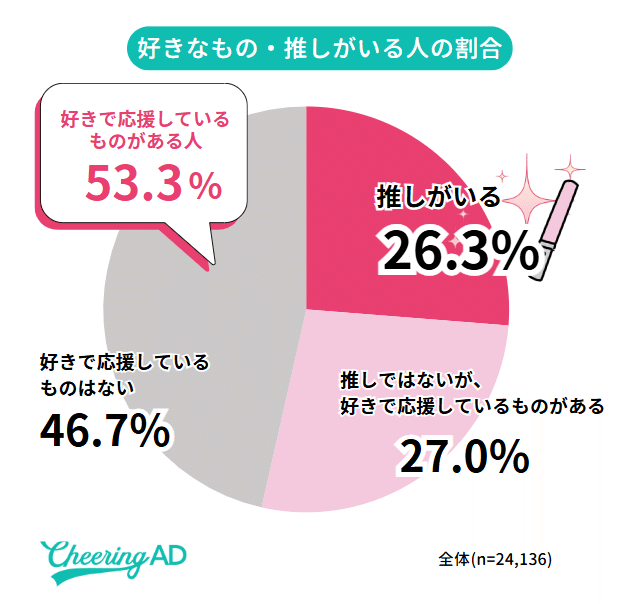
Furthermore, among Generation Z women aged 15 to 29, over half (56.9%) have a supporter, and having a supporter is becoming the norm for young people.
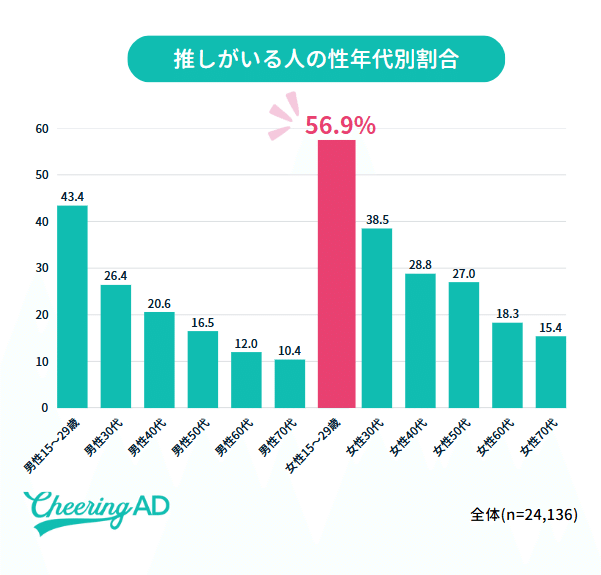
So, what exactly is the difference between "Oshi" and "Like"?
“Oshi” is wishing for happiness and success.
Favorite/favorite person or thing“I want you to be happy” “I want you to be more successful”When we conducted a survey to find out whether people were aware of this, we found that there was a 40-50% difference in awareness between people who were fans of something and people who were not fans but did like and support something.
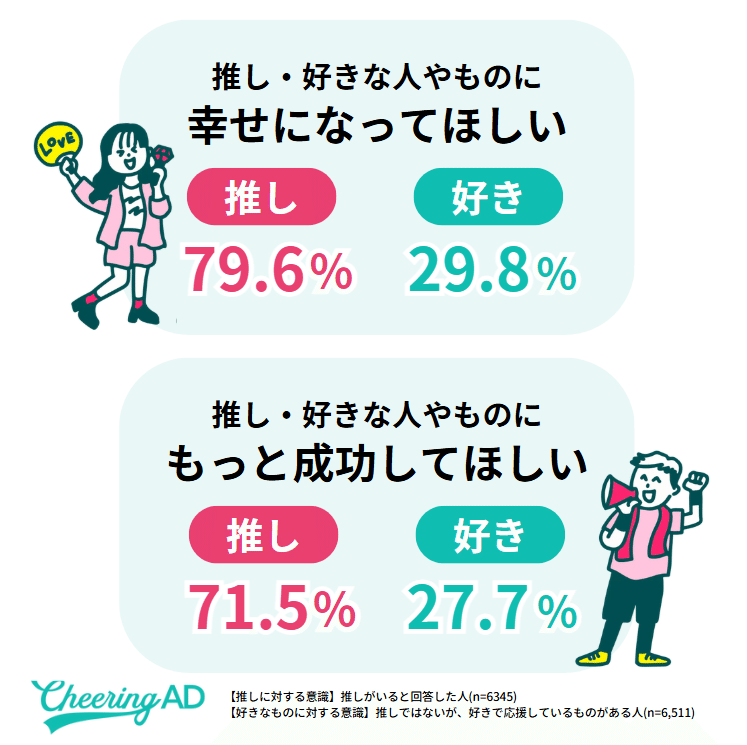
Oshi = I like or respect the Oshi himself or a specific character in the work.
Like = I like the work itself and the performance/play
Because of this difference, people who have a "favorite" tend to wish for that other person's happiness and success, don't they?
I want to contribute to the “push”!
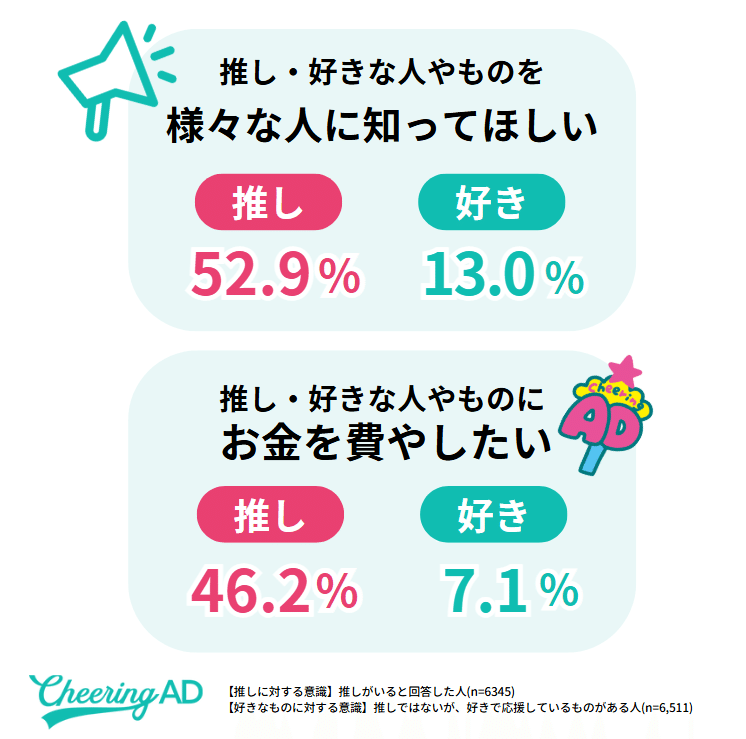
A missionary mindset of wanting a variety of people to know what you like and what you like.teeth,
More than half (52.9%) have a favorite person, while 13.0% say they like and support them.
Looking at the level of interest in “support advertising”──
55.1% of people said they had a favorite, and 22.7% said they liked it, more than double the difference in interest. (*Data from people who know about support advertisements)
moreover,Sense of contribution and wanting to spend money on things you likeThere was also a large difference between 46.2% of people who had a supporter and 7.1% of people who liked and supported her.
Because they want their oshi to be successful, they become active in their oshi activities by participating in events, buying goods, and spreading information on SNS, because they want many people to know about their work and they want it to sell.
Supporting your “pusher” will make you happy too.
Of course, Oshikatsu is not possible only with a sense of contribution.
I often see people say, ``When I see my favorite person working hard, I feel motivated to do my best,'' on social media. “Oshi” goes beyond mere tastes and hobbies,my purpose in lifeThere are many people who are.
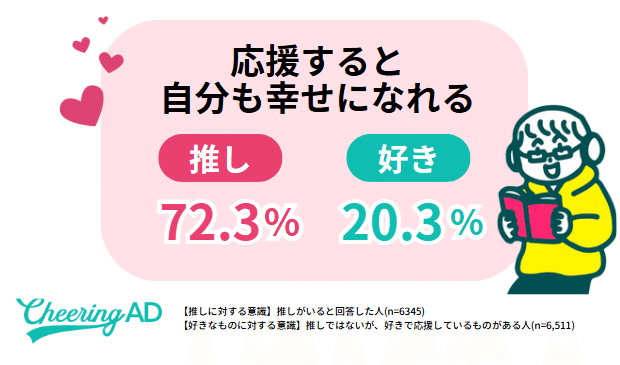
actually,72.3% of people say that supporting their favorite people makes them happy as well.Most people who engage in Oshikatsu receive happiness from Oshikatsu.
Differences in support activities
The difference between "favoring" and "liking" appears not only in one's awareness of what one likes, but also in one's actions.
The percentage of people who had experience with specific support/support activities was 88.8% for those who had a favorite, and 36.2% for those who had something they liked.
A ``favorite'' is someone you want to support, whereas a ``like'' is someone you come to like as you interact with them in your daily life.Maybe.
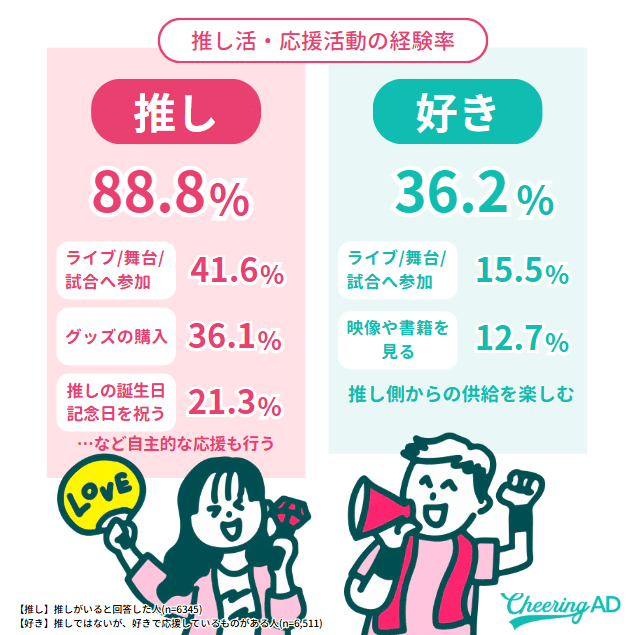
Comparing specific support behaviors, those who like something have a 15.5% experience rate of participating in live performances, stages, and games, and 12.7% of people watching videos and books.Standard support that enjoys supply from the pushing sideI am doing
On the other hand, in the case of "Oshi", there are many things that contribute to the Oshi, such as participating in live performances, stages, and matches (41.6% experience rate), purchasing goods (36.1%), and celebrating the Oshi's birthday or anniversary (21.3%).Voluntary fan-based supportI'm doing it.
summary
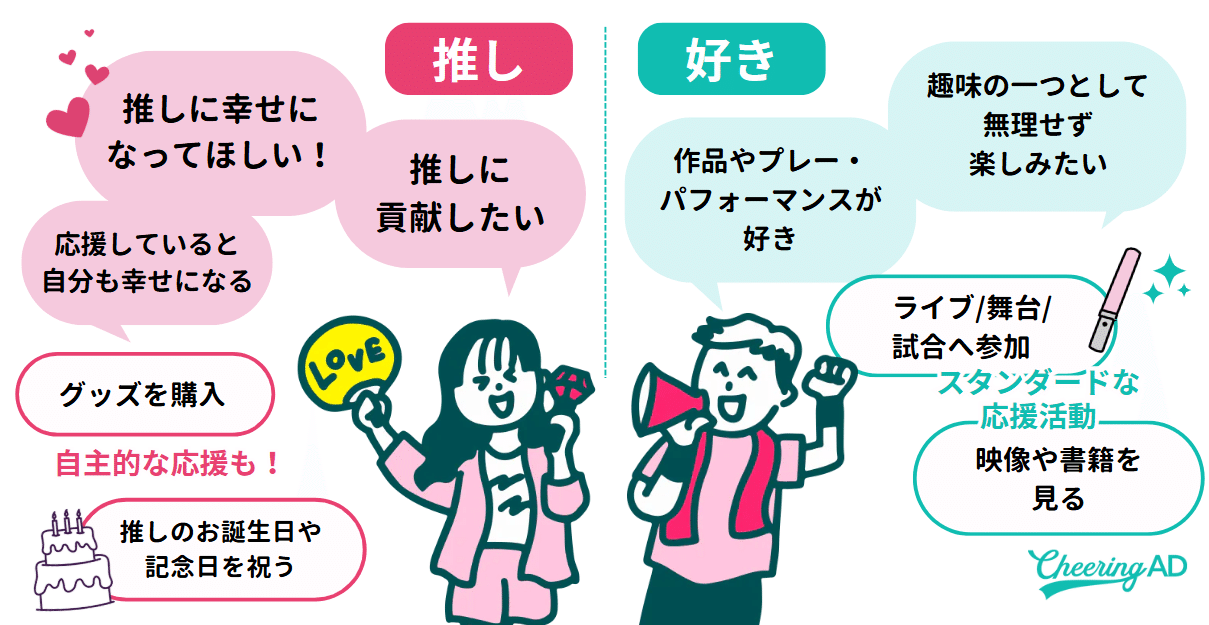
I found out that there is a difference between liking and pushing someone in their desire for happiness, sense of contribution, mindset of wanting to be happy too, and support activities.
This difference is probably due to the ``sense of distance''.
「“I like it” is the pleasure of looking at it from a little distance.
“Oshi” is the feeling of wanting to get a little closer and watch and support the person.
Of course, neither is above or below.Everyone enjoys it in different waysis.
However, the moment when you suddenly think, ``I thought I just liked someone, but maybe I'm pushing someone else?'' may be a small change of heart that happens to everyone.
This article is based on a survey conducted among approximately 25,000 people nationwide from December 2024 to January 2025.
↓↓↓Click here for detailed results of “Oshikatsu/Support Advertising Survey 2024”! ↓↓↓
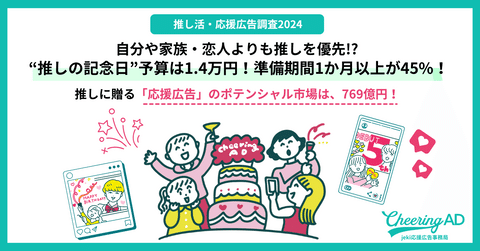
In the future, "Cheer Ad Lab" will continue to disseminate the latest survey results regarding Oshikatsu!
Please feel free to contact us with any inquiries regarding joint research or surveys on support activities centered on "Support Advertisements."
Look forward to the next update✨
“Oshikatsu/Support Advertisement Survey 2024” Survey Overview
Researcher: JR East Japan Planning Co., Ltd. Jeki support advertising office “Cheering AD”
Research method: Internet questionnaire survey
Survey period: December 26, 2024 to January 9, 2025
Survey area: Nationwide
Survey target: Men and women aged 15 to 79
Number of samples: 24,136